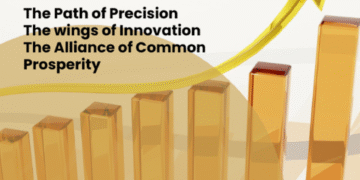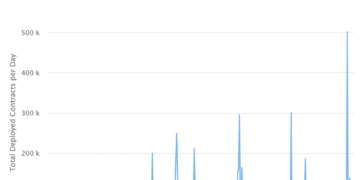NEW YORK, NY, October 22, 2025 /24-7PressRelease/ — While Tether flexes its billions, USDC is building something more powerful: trust.
In crypto, attention is oxygen. Protocols live and die by hype cycles, tweet storms, and TV punditry. But sometimes, the real power moves happen off the main stage, away from the noise, in the slow, strategic dance between regulators and infrastructure builders.
That’s where Jeremy Allaire and Circle have been quietly gaining ground.
While Tether continues to command headlines for its market dominance and mystery, USDC is making inroads in the only arena that matters long term: regulation. The stablecoin wars aren’t about market cap. They’re about legitimacy. And in that race, Circle is pulling ahead without breaking a sweat.
The Stability Theater
Tether is the loud heavyweight. With over $110 billion in circulation, it’s the default stablecoin for many exchanges, traders, and markets that operate in a regulatory gray zone. But its dominance comes with constant speculation about reserves, audits, and who exactly is pulling the strings behind the curtain.
USDC, by contrast, is the institutional favorite. It’s the “teacher’s pet” of stablecoins: compliant, transparent, and boring on purpose.
While Tether’s Paolo Ardoino delivers spicy quotes to crypto press, Jeremy Allaire is sitting in Washington D.C., quietly submitting whitepapers and building bridges. He’s not chasing headlines. He’s chasing trust.
Regulators Are Watching. And That’s the Point
As the U.S. Congress debates how to define, regulate, and license stablecoins, USDC has become the de facto case study for what “a compliant stablecoin” could look like.
Allaire is playing the long game. He’s testified before Congress. He’s published Circle’s reserve attestations. He’s building partnerships with banks, fintech companies, and payment networks. In short, he’s doing everything Tether is not.
Even Elizabeth Warren, known for her broad skepticism of crypto, hasn’t come after Circle with the same fire. And that says something. It’s not that USDC is invincible, it’s that Circle has positioned itself as the adult in the room. In a market built on speculation, that’s its own kind of alpha.
The Network Effect Nobody Talks About
Most conversations about stablecoin dominance center on liquidity: who’s accepted where, who has the deepest pools, who moves the most money.
But the real network effect isn’t just in trading. It’s in trust.
Banks, governments, payment processors. They don’t want volatility. They want certainty. And they’ll choose the slower, safer option every time.
That’s why USDC is being integrated into banking APIs, used in cross-border payment pilots, and tested in institutional lending rails. It’s not flashy. It’s foundational.
Allaire isn’t trying to win Twitter. He’s trying to win the Fed.
What This Means for the Ecosystem
The future of stablecoins is going to look a lot more like Circle than Tether. That doesn’t mean USDT will vanish, it’ll probably remain the default in offshore markets, high-volume DEXs, and places where KYC is a four-letter word.
But as governments sharpen their pencils and global crypto regulation becomes a certainty, the winners won’t be the loudest. They’ll be the most prepared.
Jeremy Allaire is building for that world. And whether crypto wants to admit it or not, it needs him to succeed.
# # #












